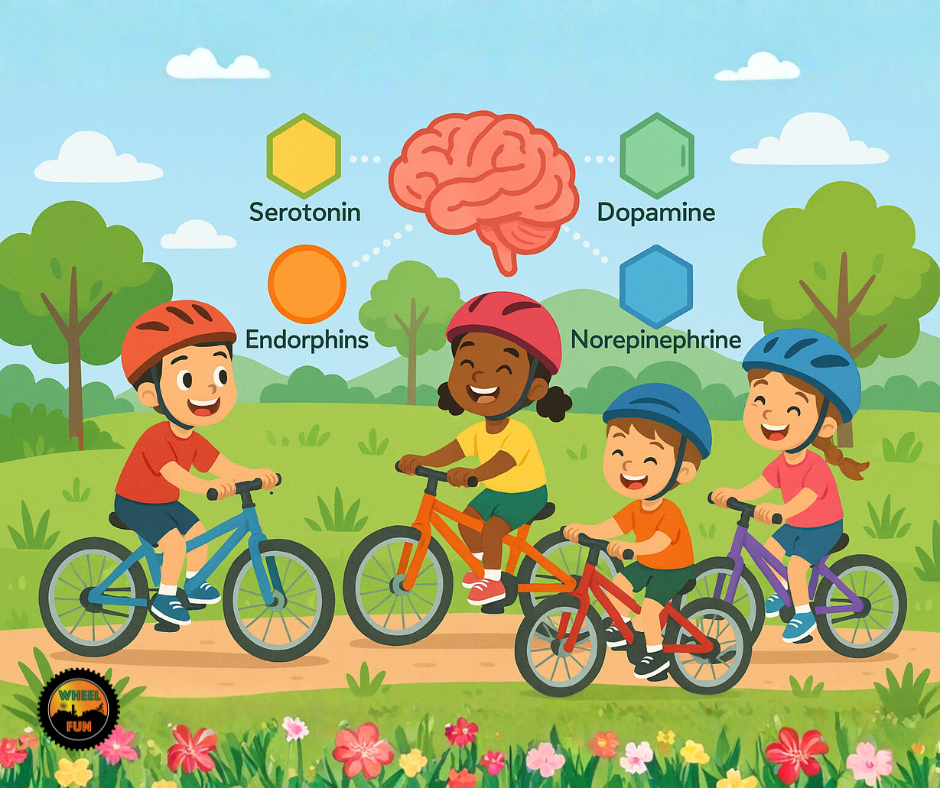
The Pedals of Peace: Why Cycling is a Prescription for Mental Well-being
“Get on your bike as much as you can!” This is a sentiment I often convey. As a mental health therapist, I have observed the significant benefits of mountain biking for both myself and my clients, recognizing it as a powerful, non-pharmacological intervention for mental wellness. The profound effects of getting on a bike extend far beyond physical fitness, touching upon fundamental aspects of neurological function, emotional regulation, and overall joy.

One of the most fascinating aspects of cycling’s mental health benefit lies in its influence on the brain’s plasticity—its capacity to reorganize and form new neural connections. The act of cycling inherently utilizes bilateral stimulation, engaging both sides of the body and the brain simultaneously through the rhythmic, alternating movement of the legs.
This bilateral stimulation is a core component of therapeutic models like Eye Movement Desensitization and Reprocessing (EMDR) and helps create an atmosphere where the brain becomes more pliable and more open to growth and change. By creating these new neural pathways, the brain is better able to process information, integrate difficult memories, and adapt to new coping strategies. A growing body of research and educational publications continues to highlight the cognitive and emotional benefits stemming from this specific type of movement. Cycling, therefore, offers a natural, dynamic way to increase your brain’s resilience and flexibility.
The Science of Feeling Good
The intuitive sense of well-being many people feel after a ride is fully supported by science. Movement, especially sustained physical activity like cycling outdoors, naturally stimulates the release of essential neurotransmitters and hormones—often referred to as the body’s “good chemicals.”
Endorphins: These natural pain relievers and mood elevators contribute to the feeling of “runner’s high,” or in this case, the “cyclist’s bliss,” reducing the perception of pain and inducing a sense of euphoria.
Serotonin: Critical for regulating mood, sleep, appetite, and social behavior, increased serotonin levels can help combat feelings of depression and anxiety.
Dopamine: Often called the “reward” chemical, dopamine is released when we achieve a goal (like cresting a hill or completing a trail), reinforcing the positive behavior and increasing motivation.
Norepinephrine: This chemical helps regulate alertness and arousal, improving focus and attention during and after a ride.
Furthermore, being outdoors and exposing oneself to sunlight stimulates Vitamin D production, which is increasingly linked to better mood regulation and decreased risk of depressive symptoms. The effect of these chemical boosts provides a robust, scientifically-proven solution to many common mental health struggles.

How Cycling Strengthens the Brain
The intuitive sense of well-being many people feel after a ride is fully supported by science. Movement, especially sustained physical activity like cycling outdoors, naturally stimulates the release of essential neurotransmitters and hormones—often referred to as the body’s “good chemicals.”
- Endorphins: These natural pain relievers and mood elevators contribute to the feeling of “runner’s high,” or in this case, the “cyclist’s bliss,” reducing the perception of pain and inducing a sense of euphoria.
- Serotonin: Critical for regulating mood, sleep, appetite, and social behavior, increased serotonin levels can help combat feelings of depression and anxiety.
- Dopamine: Often called the “reward” chemical, dopamine is released when we achieve a goal (like cresting a hill or completing a trail), reinforcing the positive behavior and increasing motivation.
- Norepinephrine: This chemical helps regulate alertness and arousal, improving focus and attention during and after a ride.

Rediscovering Joy
Furthermore, being outdoors and exposing oneself to sunlight stimulates Vitamin D production, which is increasingly linked to better mood regulation and decreased risk of depressive symptoms. The effect of these chemical boosts provides a robust, scientifically-proven solution to many common mental health struggles.
In the context of trauma and chronic stress, our nervous systems often become stuck in a state of hyperarousal (fight/flight) or hypoarousal (freeze/fawn). This prolonged state of stress floods the body with cortisol and adrenaline, disrupting homeostasis.
The repetitive, rhythmic motion of cycling—the consistent cadence of pedaling, the visual focus required to navigate a trail, and the subtle adjustments of balance—serves as a powerful mechanism for nervous system regulation. This focused rhythm acts like a metronome for the body, helping to “balance out” and “recalibrate” a dysregulated system. By concentrating on the immediate physical task—the mechanics of the bike, the texture of the trail, the effort of the climb—the mind is drawn away from the often-overwhelming internal narrative of stress and anxiety. The physical act of exerting effort and then recovering mimics the healthy cycle of stress and rest, gradually teaching the nervous system that the body is safe and capable of returning to a state of peace.
Modern day-to-day life is largely sedentary and often involves prolonged periods of mental focus without corresponding physical movement, leading to an imbalance. Getting on a bike inherently stimulates a profound sense of physical balance that is often lacking in our static, screen-focused routines. This effort to maintain physical equilibrium on two wheels translates metaphorically into a greater sense of emotional and psychological balance.
Beyond the therapeutic and chemical effects, the simplest benefit is the increase in fun. The sheer joy of speed, the feeling of flow on a winding trail, or the simple pleasure of being on two wheels is deeply restorative. Cycling offers a wonderful throwback to the freedom of childhood. This ability to temporarily shed the weight of adult responsibilities and reconnect with playful movement is, in itself, a vital mental health resource.
My invitation to you is the same that I tell my clients: “Get on your bike as much as you can”. Whether your goal is to recalibrate your levels of stress, calm your nervous system after a period of intense pressure, or simply increase your daily dose of fun, the mental health effects of cycling are overwhelmingly positive and absolutely worth the effort. Now, if you’ll excuse me, it’s time for me to go get on my bike.
About the Author
Christy Jo Crowley, LMSW, is an adventure therapist who uses the bike any chance she can as a tool for healing and connection. In her spare time, Christy Jo serves on the board of Wheel Fun, where she helps promote access to outdoor experiences and the mental health benefits of biking for youth across Arizona.



